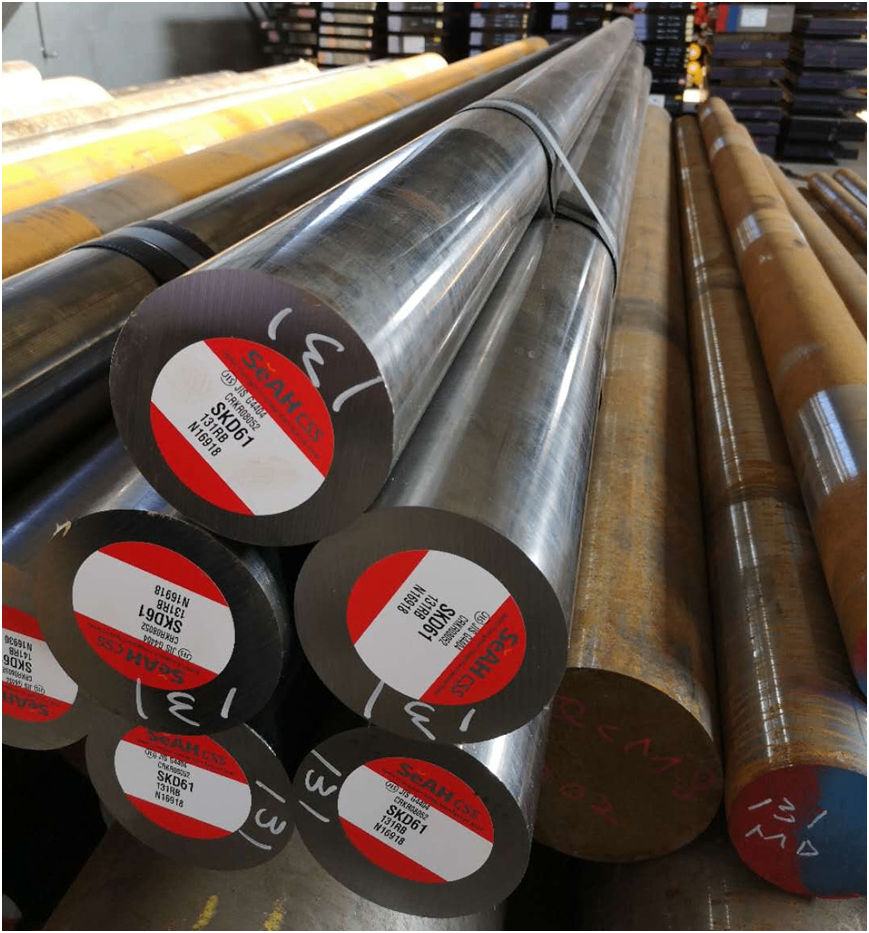In a new energy vehicle factory in Shenzhen, a giant die-casting machine is injecting liquid aluminum into a precision mold. Under the pressure of 2,000 tons and the high temperature of 800℃, the surface of the mold has a blue luster, which is the "high-temperature armor" unique to high-end mold steel. When the aluminum liquid solidifies and takes shape, the complex structure of the integrated rear cabin of the car is perfectly presented. The core of this 500-kilogram mold is a special steel that is only 3 cm thick - this is exactly the exquisite metaphor of modern industrial civilization: the most hardcore technology is often hidden in the most inconspicuous details.
1. Material Gene: Finding a Balance between Ice and Fire
The "dual personality" of mold steel is amazing. In the stamping and die-casting workshop, it needs to withstand millions of cycles of impact like spring steel; in the plastic molding mold, it must show the high-temperature stability of heat-resistant steel. This contradictory characteristic stems from its unique metallurgical process. Through vacuum melting technology, impurities such as sulfur and phosphorus are controlled at the ppm level, and the uniformity of carbide distribution reaches the nanometer scale. PM238 powder metallurgy steel developed by a German mold steel company has refined carbide particles to 0.5 microns, increasing the mold life by 3 times.
2. Precision manufacturing: industrial art of micron-level competition
In the field of medical equipment, mold steel is writing a new legend. A manufacturer of orthopedic equipment uses ELMAX ultra-high-strength mold steel to successfully produce bone replacement scaffolds with a gradient porosity distribution. After deep cryogenic treatment, the hardness of this steel can reach 62HRC, but it can maintain a cutting accuracy of 0.01 mm. When the laser interacts with the surface of the steel in a micro-area, the molten area and the matrix form a nano-scale metallurgical combination, showing a complex structure comparable to biological tissue.
3. Intelligent evolution: data-driven steel revolution
Digital twin technology is reshaping the mold steel R&D model. A Swedish steel plant uses finite element simulation to pre-calculate the stress distribution of mold steel under different working conditions to guide component design. The VANADIS-4EXTRA steel grade it developed optimizes the vanadium-molybdenum ratio through machine learning, which increases thermal fatigue resistance by 40%. In the field of 3D printing, the composition of mold steel powder can be controlled point by point to produce gradient functional molds, and different parts of the same part have different mechanical properties.
4. Green Future: Steel Practice of Circular Economy
The goal of carbon neutrality has given birth to the green revolution of mold steel. MARAGING steel developed by a Japanese company is smelted with 85% recycled materials and has comparable performance to virgin materials through special heat treatment processes. In the field of mold remanufacturing, laser cladding technology gives scrapped molds a new life. A certain automobile mold factory builds digital archives and manages the entire life cycle of each mold, increasing resource utilization by 65%.
From wooden molds in the steam age to modern precision mold steel, humans have never stopped pursuing manufacturing precision. When nanotechnology meets steel, and when digital twins empower material science, mold steel is completing the transformation from "industrial consumables" to "strategic materials". In this era of intelligent manufacturing, mold steel is no longer just a molding tool, but a inheritor of the genes of industrial civilization, writing the wisdom code of human transformation of matter at the microscopic scale.



